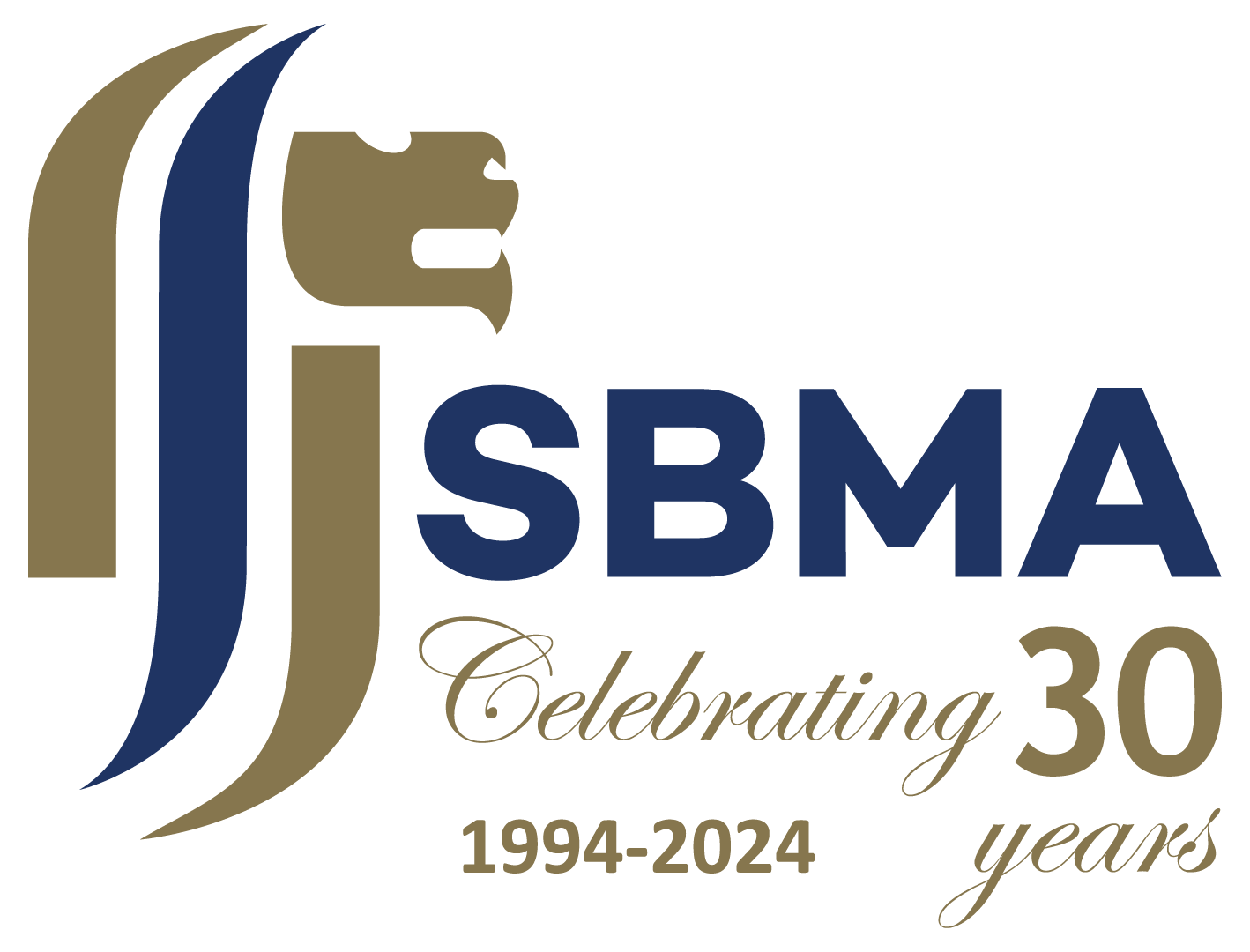Navigate
Article List
- Artificial Intelligence Application in Algorithmic Trading: Two-day Workshop
Organised by SBMA, 16 & 18 October 2018
- Malaysia’s Precious Jewellery Market
By Ermin Siow, President, Federation of Goldsmiths and Jewellers Association of Malaysia, 2014-2018
- Why Do Turkish Banks Hold Gold at the Turkish Central Bank?
By Aslı Şahin, FX & Precious Metals Specialist
- The Impact of Artificial Intelligence on Trading and Finance
By Gordon Cheung, Deputy Chief Executive, SBMA and Avirath Kakkar, Head of Strategy, EIS Global Capital Management
- Gold and Blockchain: A Win-Win Combination
By Nikita Knyazev, Head of Commerce, A-Ventures
- SBMA News
By Albert Cheng, CEO, SBMA
Article List
- Artificial Intelligence Application in Algorithmic Trading: Two-day Workshop
Organised by SBMA, 16 & 18 October 2018
- Malaysia’s Precious Jewellery Market
By Ermin Siow, President, Federation of Goldsmiths and Jewellers Association of Malaysia, 2014-2018
- Why Do Turkish Banks Hold Gold at the Turkish Central Bank?
By Aslı Şahin, FX & Precious Metals Specialist
- The Impact of Artificial Intelligence on Trading and Finance
By Gordon Cheung, Deputy Chief Executive, SBMA and Avirath Kakkar, Head of Strategy, EIS Global Capital Management
- Gold and Blockchain: A Win-Win Combination
By Nikita Knyazev, Head of Commerce, A-Ventures
- SBMA News
By Albert Cheng, CEO, SBMA
Gold and Blockchain: A Win-Win Combination
By Nikita Knyazev, Head of Commerce, A-Ventures
Published on September 19, 2018

Financial and retail investors are having a tough time in the market today. The US stock market is looking overvalued and the S&P 500 is near all-time highs. Other assets like housing and real estate also seem to be unstable. Gold has been under pressure for years and may not be ideal if you are expecting a bull run, but it will surely hold its value. However, according to the World Gold Council, there was a 7% decline in gold demand in 2017, which was largely investment-related.
I fully agree with Ross Norman from Sharps Pixley that a critical component in investment demand for gold is its publicity. Google Trends charts for the keyword “investment gold” shows a downward movement from its peak in 2011. For most journalists and bloggers, gold simply went out of fashion. Because of this, the crisis is deeper than the independent research houses indicate. It is obvious now that Bitcoin, Ripple, Ether and other cryptocurrencies have taken much media spotlight from our industry. For instance, you can go through the Thomson Reuters 2018 Trading Client Cryptocurrency Survey, which shows that investor interest in cryptocurrencies is stronger than the year before. In particular, one-third of survey respondents said they were “thinking about” trading cryptocurrencies and almost 90 percent of them said they planned to do so in the next 12 months.
Various players in the gold market are exploring how to leverage the popularity of blockchain and cryptocurrencies to raise interest in the gold market. Some of them are offering cold storage services and access to trading Bitcoin, Ethereum in addition to their usual gold business. For example, International Depository Services Group, a privately owned subsidiary of Dillon Gage Metals, is now offering cold storage for Bitcoin and Ripple at its Dallas location. Dubai-based gold trading company Regal RA DMCC received a cryptocurrency trading license, which allows the company to open a cold storage vault. Goldmoney has also recently expanded its cold storage by adding Ethereum and Bitcoin Cash.
Risk Profile for investment gold products

But this vaulting synergy is only the first step of collaboration between gold and the blockchain industry. Gold, a liquid asset with low volatility that is traded within an established regulatory framework, is an important part of the global financial system. The distributed ledger mechanism that underpins cryptocurrencies has the potential to become an established part of the financial system. This new technology presents many opportunities for building new applications, including tracking gold’s provenance across the supply chain, introducing efficiencies into post-trade settlement processes and transforming gold into a digital asset, which may be the most important change. While the other changes may improve business process, turning gold into a digital asset can bring new investors to the gold market.
First, the blockchain can help in managing smaller amounts of gold (such as a 1 ounce or 1 gram). I believe this lower barrier of entry for potential gold investors can bring increased liquidity to the market. The idea of trading gold in such small volumes has been around for many years. Usually, it was a product offered by online gold trading platforms that pooled buyers into a closed-loop system with a single counterparty. The owner does not own an actual physical gold coin or bar, which is instead segregated and allocated among buyers. They are captive to that particular platform, with potentially poor liquidity, monopoly pricing and counterparty risk exposure. This is the problem of unallocated gold.
Now we are seeing allocated digital gold electronically traded with direct ownership, such as Royal Mint Gold and VaultChain Gold. The general idea is that allocated gold in the vault has immutable records of ownership that are maintained on a cryptographically secure blockchain database. In case of RMG, the gold vault will be provided and managed by The Royal Mint, and the CME Group will provide the trading platform. In case of VaultChain Gold, gold will be provided and managed by the Royal Canadian Mint, and trading will be performed on the Tradewind platform. In both cases, investors have the option of redeeming physical gold and have a zero annual cost of carry. Due to the fact that the cost of acquisition is not specified in both cases at the moment, there should be some premium to cover such costs and some margin for the refinery and platform.
Second, gold may become a stable asset for crypto investors. A lot of early holders of Bitcoin, Ethereum and other crypto assets are now sitting on large gains, which have unbalanced their portfolios.
Volatility and Price Chart


Imagine if you started with $10,000 and invested $1,000 into Bitcoin at $500, and the rest in bonds. Realistically this is what occurred: you made 3% on the bonds for approximately two years (1.03 x 1.03 = 1.0609), while bitcoin grew from $500 to $7,000, giving you a 1,400% return. So in monetary terms, your $9,000 worth of bonds is now worth $9,548.1, while your Bitcoin investment is now worth $14,000. Your portfolio is now worth $23,548.1. At this point, experienced investors would be thinking about diversifying. OK, but into what asset? Bonds have negative returns, and stocks are at all-time highs. Real estate is not also a good choice because of their illiquidity, and commodities run the risk of becoming a victim of trade wars between the United States and China.
Crypto investors also prefer holding decentralised assets, so part of their capital gains would likely go towards new ICOs, but these investments are also rather illiquid and volatile.
As such, a “stable coin”, or a cryptocurrency that is pegged to another stable asset, is necessary. This currency would have to be global, not tied to a central bank and have low volatility, which would allow for its practical day-to-day use. Short-term stability is important for transactions and long-term stability is important for holding. An ideal stable coin should be able to withstand a great deal of market volatility, be affordable to maintain, be scalable in terms of liquidity, have easy-to-analyse stability parameters, and be transparent to traders – like the US dollar or gold! A fiat or gold-backed scheme is also highly regulated and constrained by legacy payment rails. There are several projects working on this problem and each one has advantages and disadvantages.
Popular stable coins
Tether is 100% backed by fiat currency assets in a reserve account. The conversion rate is 1 tether (USDT) = US$1. The Tether platform is considered to be fully backed if all tethers in circulation are less than or equal to all fiat that is held in the bank account.
Advantages: Close to a like-for-like swap from fiat to crypto, well integrated and established, near $3 billion in turnover per day.
Disadvantages: Centralised, not trustless, audit refusals.
DGX is a spendable digital warehouse claim for gold, with ownership validation on the Ethereum blockchain. Digix promises transparency: warehousing of gold in vaults that are certified members of LMBA, with “real-time transparency; immutable on-chain auditing records for viewing from inspectorate and PWC”.
Advantages: Planned fees appear to be similar to ETF fees, transaction fees will be 0.1% of the transacted amount, audited reserves.
Disadvantages: Centralised emission, small turnover, rate for redeeming gold not yet specified.
GOLD is a cryptocurrency asset that is 100% ensured by gold, stored in a variety of well-known storage facilities around the world. GoldMint is committed to buying back GOLD from users. It is planned to decentralize emissions, by vending gold storages “Custody Bot”, connected to the blockchain.
Advantages: Audited reserves; emissions currently centralised and aligned to the amount of gold brought by the company.
Disadvantages: Small turnover, independent auditor not yet specified.
Will gold tokens change the gold market?
It will take time for gold tokens like GOLD or DGX to grow in popularity and have trading volumes like Tether. But according to history, gold is more valuable and decentralised than the US dollar.
In all the projects described above, blockchain technology is used to create an immutable, distributed, and transparent record of asset ownership and to increase liquidity in the gold market. However, trusting intermediaries is necessary in all cases – whether they are for storage or transportation – and the market will need time to adjust to this. However, there is a potential for the bullion market to receive new investors and become an entry point and bridge for investors in cryptocurrencies.

Nikita Knyazev is the head of commerce at management company A-Ventures, which has a focus on precious metals trading. He holds a degree in applied physics and mathematics from the Moscow Institute of Physics and Technology and a degree in Corporate Finance from the Higher School of Economics. In his previous roles, he has worked in market risk, and in an investment company where he was responsible for hedging operations in commodity markets and maintaining an optional part of structural products as a derivatives trader. He was also previously the deputy CEO of Ekaterinburg Non-Ferrous Metals Processing Plant, a refinery on the LBMA Good Delivery list.























